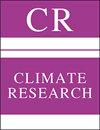适应气候对水稻生产的影响:对缅甸中部干旱地区农民的分析
IF 1.6
4区 地球科学
Q4 ENVIRONMENTAL SCIENCES
引用次数: 0
摘要
摘要:我们探讨了缅甸稻农适应气候变化的农业生态方法、影响其适应策略的因素、其适应能力(AC)的程度以及 AC 与水稻产量之间的联系。我们随机抽取了两个村庄的 197 户农户进行社区调查。为了收集定性数据,我们在曼德勒地区皎施镇的 2 个抽样村庄进行了 7 次关键信息提供者访谈和 2 次焦点小组讨论。研究采用了描述性分析、多元回归(MR)分析和适应能力指数来检验数据。适应能力高的稻农采用最多的适应策略包括作物多样化(98% 的农户采用)、利用耐气候品种(92%)和改变种植技术(87%)。MR 分析表明,教育水平和农业实践年限等个人因素,以及获得信贷、灌溉、合作社成员资格、参加培训和获得信息传播等社会因素,是农民选择适应方法的重要积极决定因素。高适应性农民的水稻产量(4506.46 千克/公顷)高于低适应性农民(3392.56 千克/公顷)。据评估,这些社区农民的总体适应性处于中等水平(0.53)。建议相关政府和私营实体促进社区教育和交流网络,以推动适应行动。以系统性和战略性的方式改善灌溉和信贷设施,将有意义地提高农民的长期适应能力。本文章由计算机程序翻译,如有差异,请以英文原文为准。
Adaptation to climate impacts on rice production: an analysis of dry zone farmers in central Myanmar
ABSTRACT: We explore the agroecological methods that rice farmers of Myanmar employ for adapting to climate change, the factors influencing their adaptation strategies, the extent of their adaptive capacity (AC), and the connection between AC and rice yield. We randomly selected 197 farming households in 2 villages for a community-based survey. To collect qualitative data, 7 key informant interviews and 2 focus group discussions were conducted in 2 sampled villages in Kyaukse Township, Mandalay Region. The study utilized descriptive analysis, multiple regression (MR) analysis, and an adaptive capacity index for data examination. The most practiced adaptation strategies among rice farmers with high AC included crop diversification (adopted by 98% of farmers), utilization of climate-resistant varieties (92%), and modification of planting techniques (87%). The MR analysis revealed that personal factors, such as level of education and years of agricultural practice, along with social factors, such as access to credit, irrigation, cooperative memberships, participation in training, and access to information dissemination, were significant positive determinants of the farmers’ choice of adaptation methods. Farmers with high AC were found to have a higher rice yield (4506.46 kg ha-1) compared to those with low AC (3392.56 kg ha-1). The overall AC was assessed to be at a moderate level (0.53) for farmers in these communities. It is recommended that relevant government and private entities promote community education and communication networks to foster adaptation initiatives. The improvement of irrigation and credit facilities in a systematic and strategic manner would meaningfully enhance the long-term AC of farmers.
求助全文
通过发布文献求助,成功后即可免费获取论文全文。
去求助
来源期刊

Climate Research
地学-环境科学
CiteScore
2.90
自引率
9.10%
发文量
25
审稿时长
3 months
期刊介绍:
Basic and applied research devoted to all aspects of climate – past, present and future. Investigation of the reciprocal influences between climate and organisms (including climate effects on individuals, populations, ecological communities and entire ecosystems), as well as between climate and human societies. CR invites high-quality Research Articles, Reviews, Notes and Comments/Reply Comments (see Clim Res 20:187), CR SPECIALS and Opinion Pieces. For details see the Guidelines for Authors. Papers may be concerned with:
-Interactions of climate with organisms, populations, ecosystems, and human societies
-Short- and long-term changes in climatic elements, such as humidity and precipitation, temperature, wind velocity and storms, radiation, carbon dioxide, trace gases, ozone, UV radiation
-Human reactions to climate change; health, morbidity and mortality; clothing and climate; indoor climate management
-Climate effects on biotic diversity. Paleoecology, species abundance and extinction, natural resources and water levels
-Historical case studies, including paleoecology and paleoclimatology
-Analysis of extreme climatic events, their physicochemical properties and their time–space dynamics. Climatic hazards
-Land-surface climatology. Soil degradation, deforestation, desertification
-Assessment and implementation of adaptations and response options
-Applications of climate models and modelled future climate scenarios. Methodology in model development and application
 求助内容:
求助内容: 应助结果提醒方式:
应助结果提醒方式:


